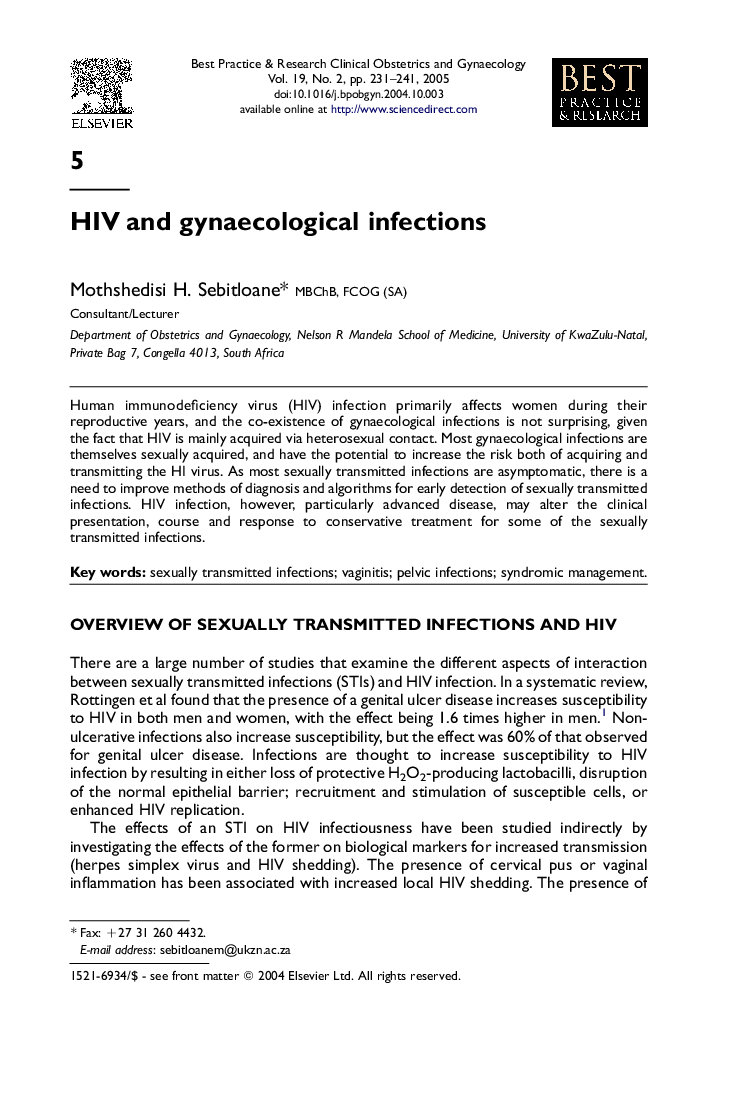| Article ID | Journal | Published Year | Pages | File Type |
|---|---|---|---|---|
| 9315702 | Best Practice & Research Clinical Obstetrics & Gynaecology | 2005 | 11 Pages |
Abstract
Human immunodeficiency virus (HIV) infection primarily affects women during their reproductive years, and the co-existence of gynaecological infections is not surprising, given the fact that HIV is mainly acquired via heterosexual contact. Most gynaecological infections are themselves sexually acquired, and have the potential to increase the risk both of acquiring and transmitting the HI virus. As most sexually transmitted infections are asymptomatic, there is a need to improve methods of diagnosis and algorithms for early detection of sexually transmitted infections. HIV infection, however, particularly advanced disease, may alter the clinical presentation, course and response to conservative treatment for some of the sexually transmitted infections.
Related Topics
Health Sciences
Medicine and Dentistry
Obstetrics, Gynecology and Women's Health
Authors
Mothshedisi H. (Consultant/Lecturer),
